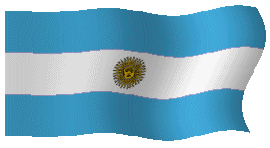
B"H
Jewish  Tours
Tours
 Buenos Aires, Argentina
Buenos Aires, Argentina
The earliest discussion of a plan for the agricultural settlement of Jews took place in 1891, when the Deutsches Central Committee fuer die Russischen Juden, established after the expulsion of Jews from Moscow, sent Oswald Boxer – a Viennese journalist and close friend of Theodor Herzl – to Brazil to investigate the possibilities of founding agricultural settlements for Russian refugees. Boxer was warmly received by government representatives and after an inspection tour he reported to the committee that Jewish settlement could indeed prosper in Brazil and that the first settlers could be dispatched as early as March 1892. The revolution of November 3, 1891, and the counterrevolution of November 23, which ended the rule of General Deodoro da Fonseca, invalidated Boxer's forecast, and the project was finally abandoned in 1892, when Boxer died of yellow fever. In 1901, on the initiative of the vice president of the Jewish Colonization Association (ICA) , who had contacts with the Belgian railway company in Rio Grande do Sul, Brazil again became the objective of Jewish agricultural settlement. The continuing stagnation in the agricultural colonies of Argentina prompted ICA to seek new land where the expenses of agricultural settlement would be lower than in Argentina.
The first organized immigration and the first Jewish communities in contemporary Brazil settled in the State of Rio Grande do Sul, the southernmost state of Brazil, which borders on Argentina and Uruguay. Through the Jewish Colonization Association and by means of agreements with the state government, hundreds of immigrants from Eastern Europe settled in agricultural colonies, following the example of similar colonies established in Argentina from 1893.
The first colony in Brazil, with an area of 4,472 hectares, was Philippson, in the region of Santa Maria, in 1904, consisting of 37 families (267 persons) from Bessarabia. The first Jewish school in Brazil was founded in Philippson in 1906, where the official curriculum was taught. In 1908, the colony had 299 inhabitants. The meager chances of economic success in the settlement, contrasted with the prospect of more comfortable livelihoods as peddlers or artisans in Santa Maria soon led to the settlement's disintegration. In August 1926 the director of ICA in Buenos Aires reported that of the 122 families who settled in Philippson at various periods, only 17 remained.
In 1912 Quatro Irmãos was established, with over 350 families divided into four nuclei: Quatro Irmãos, Baroneza Clara, Barão Hirsch, and Rio Padre. The first colonists came from Argentina and Bessarabia. In each of the nuclei a school functioned, teaching both the official and the Jewish curricula. In 1915 the population in Quatro Irmãos reached 1,600 people.
The colonists also cleared fertile areas of forest and groves (mato), which were enriched by the wood ash created by burning the vegetation. The salvaged wood was sold to ICA's sawmills in the area, and, in order to facilitate transportation and marketing, ICA began building an 18-kilometer railroad that joined Quatro Irmãos and the town of Erebango early in 1918. Flour mills and a consumer cooperative organization were also established, and in 1912 a school was built and cultural life began to develop.
In 1924 Rabbi Isaiah Raffalovich arrived in Brazil as a representative of ICA. He played a decisive role in the development of the Jewish presence in the country and tried, unsuccessfully, to organize in Brazil a unified community, inspired by kehillah principles.
In the 1920s the majority of the colonists moved to Porto Alegre and other cities in the hinterland of Rio Grande do Sul, such as Erebango, Pelotas, Cruz Alta, Passo Fundo, Santa Maria, and Erechim, establishing communities in each one of these cities.
Some of the factors that made the immigrants abandon the
colonies were the precarious quality of the land; lack of credit; isolation of
the immigrants; lack of agricultural experience; commercial and industrial
interests associated with ICA (such as the railroads) which
exploited the Jewish colonists; lack of government support, plus a military
uprising that occurred
From the 1920s, ICA began to concentrate its immigration efforts on the cities. In 1935, with ICA's support another small agricultural colony was established in Rezende, in the State of Rio de Janeiro. The colony was planned to be also a haven for some German Jewish refugee families who had previous agricultural experience, but they were unable to obtain entry visas because of the restrictions on Jewish immigration during the Vargas regime after 1937. Another attempt at negotiations by ICA, to bring some Polish families in 1939, similarly failed. The last families of the colony of Rezende left for urban regions in 1939.
|
Visite nuestro sitio/Visit our home page: |